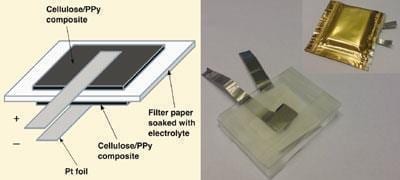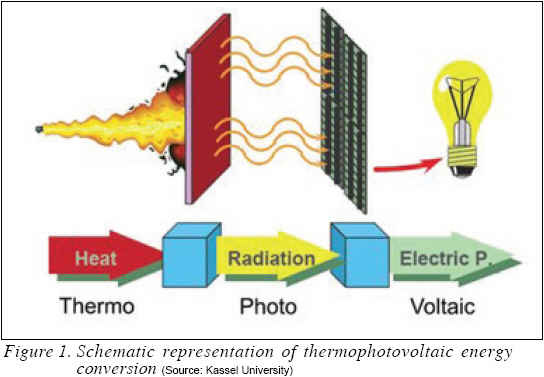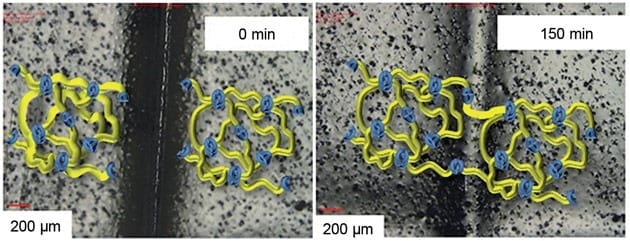
University of California, Irvine researchers have invented nanowire-based battery material that can be recharged hundreds of thousands of times, moving us closer to a battery that would never require replacement. The breakthrough work could lead to commercial batteries with greatly lengthened lifespans for computers, smartphones, appliances, cars and spacecraft.
Scientists have long sought to use nanowires in batteries. Thousands of times thinner than a human hair, they’re highly conductive and feature a large surface area for the storage and transfer of electrons. However, these filaments are extremely fragile and don’t hold up well to repeated discharging and recharging, or cycling. In a typical lithium-ion battery, they expand and grow brittle, which leads to cracking.
UCI researchers have solved this problem by coating a gold nanowire in a manganese dioxide shell and encasing the assembly in an electrolyte made of a Plexiglas-like gel. The combination is reliable and resistant to failure.
The study leader, UCI doctoral candidate Mya Le Thai, cycled the testing electrode up to 200,000 times over three months without detecting any loss of capacity or power and without fracturing any nanowires. The findings were published today in the American Chemical Society’s Energy Letters.
Hard work combined with serendipity paid off in this case, according to senior author Reginald Penner.
“Mya was playing around, and she coated this whole thing with a very thin gel layer and started to cycle it,” said Penner, chair of UCI’s chemistry department. “She discovered that just by using this gel, she could cycle it hundreds of thousands of times without losing any capacity.”
“That was crazy,” he added, “because these things typically die in dramatic fashion after 5,000 or 6,000 or 7,000 cycles at most.”
“The coated electrode holds its shape much better, making it a more reliable option,” Thai said. “This research proves that a nanowire-based battery electrode can have a long lifetime and that we can make these kinds of batteries a reality.”
Learn more: UCI chemists create battery technology with off-the-charts charging capacity
The Latest on: Nanowires in batteries
[google_news title=”” keyword=”Nanowires in batteries” num_posts=”10″ blurb_length=”0″ show_thumb=”left”]
via Google News
The Latest on: Nanowires in batteries
- Powering affordabilityon April 25, 2024 at 7:07 pm
More affordable electric vehicles are on the way. That was the takeaway from a tour that OneD Battery Sciences offered to a small contingent of Moses Lake community members Thursday afternoon at the ...
- Tumble in storage battery costs to boost shift to renewables, says IEAon April 25, 2024 at 6:52 am
An expected sharp fall in battery costs for energy storage in coming years will accelerate the shift to renewable energy from fossil fuels, the International Energy Agency (IEA) said on Thursday.
- Batteries Newson April 24, 2024 at 5:00 pm
Apr. 9, 2024 — An improved charging protocol might help lithium-ion batteries to last much longer. Charging with a high-frequency pulsed current reduces aging effects, an international team ...
- OneD to hold thank-you event Thursdayon April 22, 2024 at 5:43 pm
MOSES LAKE — OneD Battery Sciences will show off its Moses Lake facility in a pilot manufacturing event Thursday, according to an announcement from the company.
- Scientists explore the feasibility of micro black-hole batterieson April 22, 2024 at 7:39 am
Physicists theorize that tiny black holes could be generated to produce clean energy in the race to create better batteries.
- Why Batteries Come in So Many Sizes and Shapeson April 9, 2024 at 5:00 pm
If you’ve looked in your utility drawer lately, you may have noticed the various shapes, sizes and types of batteries that power your electronic devices. First, there are the round, non ...
- Why batteries come in so many sizes and shapeson April 5, 2024 at 6:05 am
Wesley Chang, Drexel University (THE CONVERSATION) If you’ve looked in your utility drawer lately, you may have noticed the various shapes, sizes and types of batteries that power your ...
- Nanowires Explained: Properties, Synthesis, and Revolutionary Applicationson March 6, 2024 at 6:59 am
Nanowires are critical in advancing the capabilities of electronic devices, renewable energy solutions, and medical diagnostics. Their role in developing high-efficiency solar cells, batteries, LEDs, ...
- CVV CVD Equipment Corporationon December 16, 2023 at 10:11 pm
and nanomaterials used in batteries, as well as semiconductors, LEDs, carbon nanotubes, nanowires, solar cells, and other industrial and research applications. The Stainless Design Concepts ...
- Researchers develop renewable and biodegradable power sources using bacteriaon October 2, 2023 at 7:11 am
"These nanowires, called pili ... The team hopes that the flexible battery can be adaptable to a variety of technologies and used within various instances in everyday life – imagining that ...
via Bing News











